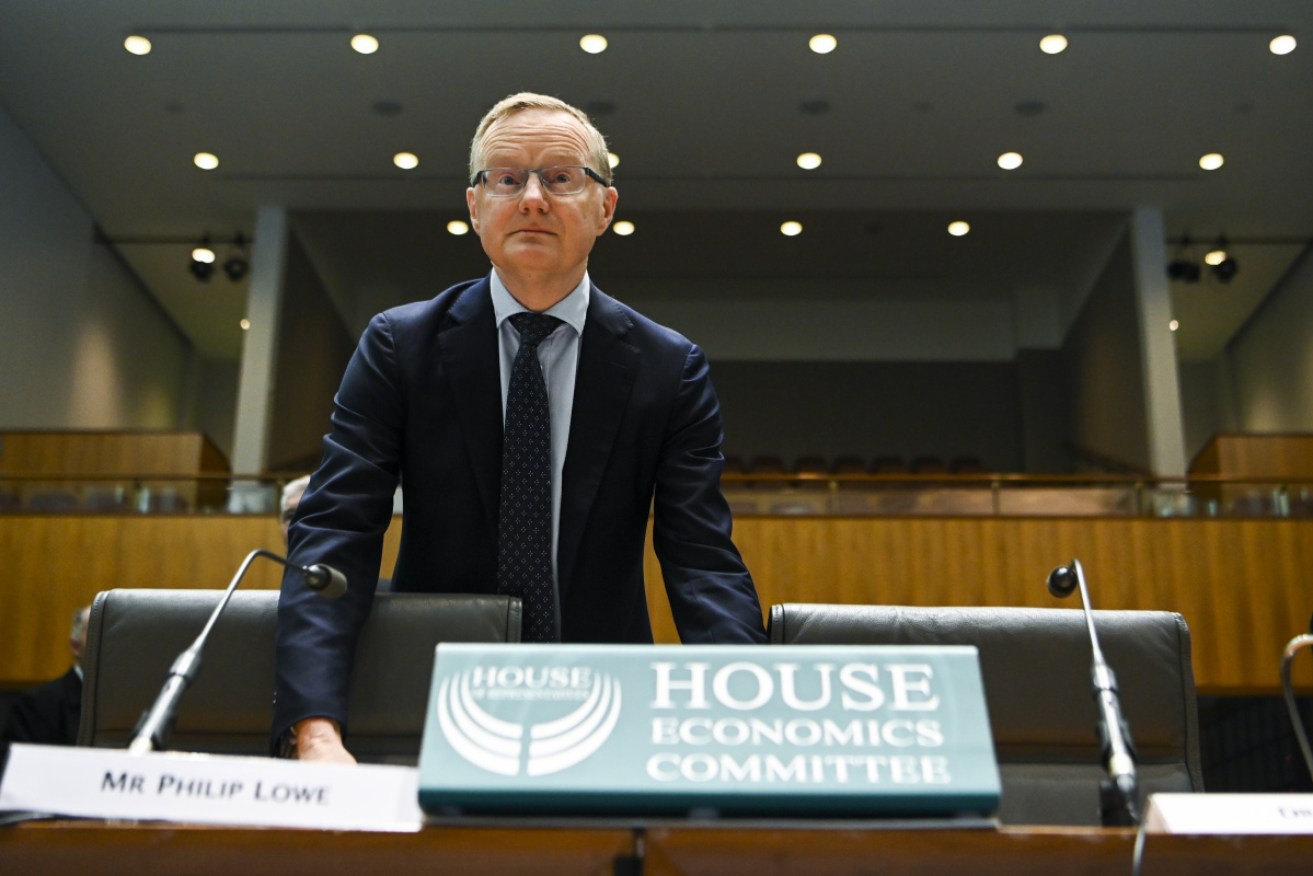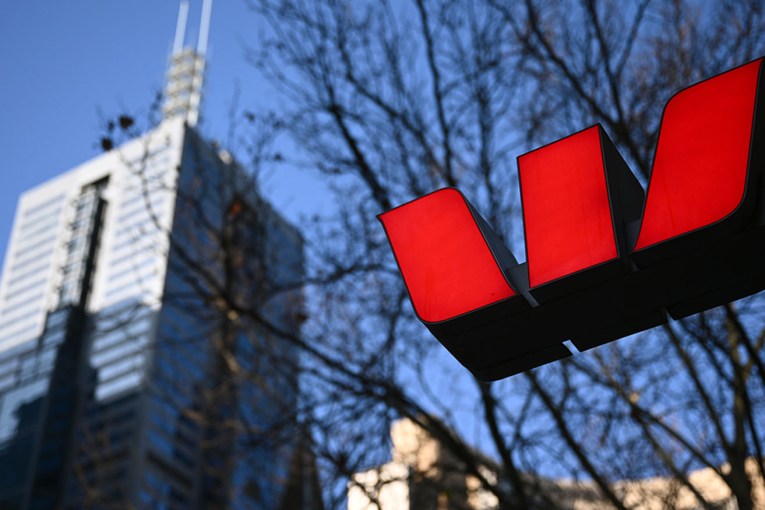Australia in danger of falling through the economic looking glass


RBA governor Philip Lowe won't rule out anything when it comes to lifting Australia's flagging economy. Photo: AAP
The federal government is pushing the Reserve Bank of Australia towards “unconventional” monetary policy – a dive through the looking glass into the surreal world of ZIRP and QE (zero interest rate policy and quantitative easing).
The respected NAB economics team hinted on Tuesday it was changing its interest rate outlook, moving from the expectation of one more 25-point rate cut to two in the wake of weak business conditions.
But NAB has surprised markets by going much further, warning that unless the government comes to the stimulus party with “meaningful” fiscal policy, the RBA’s cash rate was likely to be down to just 0.25 per cent by mid-2020 “along with the adoption of non-conventional monetary policy measures”.
It has been a source of pride that Australia has managed to avoid the uncharted waters of unconventional monetary policy as we enter our 29th year of unbroken growth.
The RBA did whatever it had to do as the GFC hit, some of it briefly “unconventional”, but it remained mainstream.
Much of the rest of the western world hasn’t been as fortunate, ensnared in negative interest rates and trillions of dollars in central bank financing with no answer as to how it can return to “normal” policy, how to unwind the emergency measures introduced to hold off something much worse than the “Great Recession”.
In responses on Wednesday to questions from the House of Representatives economics committee, the RBA warned that a full evaluation of the international unconventional policy experience could not yet be undertaken “as many of the measures that have been applied are yet to be unwound”.
In other words, the jury remains out.
The RBA also underlined that some of the unconventional measures were aimed at “severe financial market dislocation”, something that was not of concern here.
NAB lays responsibility for further interest rate cuts and any unconventional monetary policy squarely at the feet of the federal government.
“The forecast of lower interest rates reflects increased downside risks to the domestic economy and greater uncertainty about the world economy,” NAB announced.
“Importantly, we continue to see the need for additional fiscal stimulus, through new infrastructure investment, cash handouts and/or the pull-forward of tax cuts.
“Governor Lowe has repeatedly called for more help from fiscal policy, although to date the government is focused on the political objective of returning the budget to surplus, pointing only to possible tax concessions for business investment in the May 2020-21 Budget.
“Unless something meaningful is done on fiscal stimulus, we think the Reserve Bank could cut the cash rate further to 0.25 per cent by mid-2020, simultaneously undertaking unconventional monetary policy.
“Governor Lowe has said that unconventional monetary policy would most likely involve buying government bonds, but we anticipate additional steps, such as long-dated repurchase agreements to lower bank funding costs, given the bank has previously said a mix of policies is more effective based on international experience.
“The exact mix would likely be determined depending on economic and financial conditions when short-end rates move below 0.5 per cent.”
The Morrison/Frydenberg government continues to rule out fiscal stimulus. Pursuing a budget surplus means the government will be taking more out of the economy than it puts in – tightening fiscal policy, reducing growth.
That leaves all the pressure for maintaining economic growth and fighting rising unemployment on the RBA’s blunt instrument of interest rates.
NAB continues to forecast economic growth, but at the subdued level of “around 1.7 per cent” this year and 2.25 per cent in 2020.
That would not be strong enough to stop unemployment rising to 5.5 per cent and staying there.
“With unemployment well above current estimates of full employment, a key implication is that wage growth will likely remain weak.”
Philip Lowe responds to Tim Wilson’s grilling
The government’s efforts to deflect blame for a sub-par economy have been on show in the Treasurer’s haggling over renewing the agreement with the RBA on monetary policy goals and in the line of questioning pushed by the house economics committee, chaired by the Institute of Public Affairs alumnus, “Franking Credits” Tim Wilson.
In an unusually long and snarky list of subsequent written questions for the central bank, Mr Wilson took the RBA to task for changing its monetary outlook over the past year.
As economic growth changed from strong to weak, the RBA went from saying the next rate move would be up, to cutting rates.
“Can the RBA outline what confidence it believes Australians can take from such a claim given that the RBA has not a consistent position on the direction on the Australian economy over that period?” Mr Wilson queried.
The RBA, like all institutions and individuals, makes mistakes in the impossible business of forecasting, but it is nonetheless one of our few remaining trusted institutions.
That no doubt makes the bank’s repeated implied criticism of government policy all the more galling for wannabe-frontbencher Mr Wilson.
Mr Wilson seized on comments in a December speech by the deputy-governor Guy Debelle in which he said QE was a policy option in Australia “should it be required”.
A less-polite individual than a central banker might have explained to Mr Wilson that amputating a leg would be a policy option should it be required by a particular type of emergency.
Instead, the RBA provided detail on various types of unconventional policy with a clear caveat: “While at this point it is unlikely that the Reserve Bank will need to employ unconventional monetary measures, the Reserve Bank Board considered it prudent to understand the issues involved and has studied the experience of other countries.”
It’s the RBA’s job to stay across everything that’s happening in the world of monetary policy. It told Mr Wilson six broad categories of unconventional policy had been tried elsewhere:
- Very low and even negative policy interest rates
- Explicit forward guidance that policy rates will remain at a very low level until some time has passed or until certain conditions are met
- Purchasing government securities, so as to lower longer-term risk-free interest rates
- Providing longer-term funding to banks to support credit creation, typically at a favourable price and on the condition that banks lend
- Supporting financial conditions more broadly by purchasing private sector assets, such as mortgage-backed securities, corporate bonds or – in a few cases – even equities
- Foreign exchange intervention.
The RBA said the effectiveness of the measures depended on the specific conditions facing each economy at the time, that they had been effective in lowering government bond yields and in cases of “severe dislocations” of credit and that it was better to have a packaging of measures that reinforced each other.
That’s all theoretical for Australia, according to the RBA, yet the NAB team believes some degree of unconventional policy is likely if the government doesn’t change its tune.
It all sounds benign enough, but unconventional policy remains an experimental drug for the economy.
For countries in deep crisis, there’s been little option but to try the drug, despite the side effects that are still being discovered and the danger of not being able to get off it.
There’s a video getting plenty of viewing in financial markets in which Donald Amstad, of Aberdeen Standard Investments, asks dangerous questions about the West’s charge down the unconventional policy rabbit hole – what he calls “Zimbabwe economics”.
He mounts an argument that western central banks and governments have launched an unsustainable bubble in what was considered the risk-free base of financial markets, that the emerging markets that took their conventional policy medicine in the Asian financial crisis are now less risky than the west.
Watch Donald Amstad’s presentation
Whether Mr Amstad is totally correct or not, Australia is fortunate to be within the Asian sphere of solid, conventional policy.
It would be a terrible thing if a political fixation with announcing a budget surplus made us second class.








